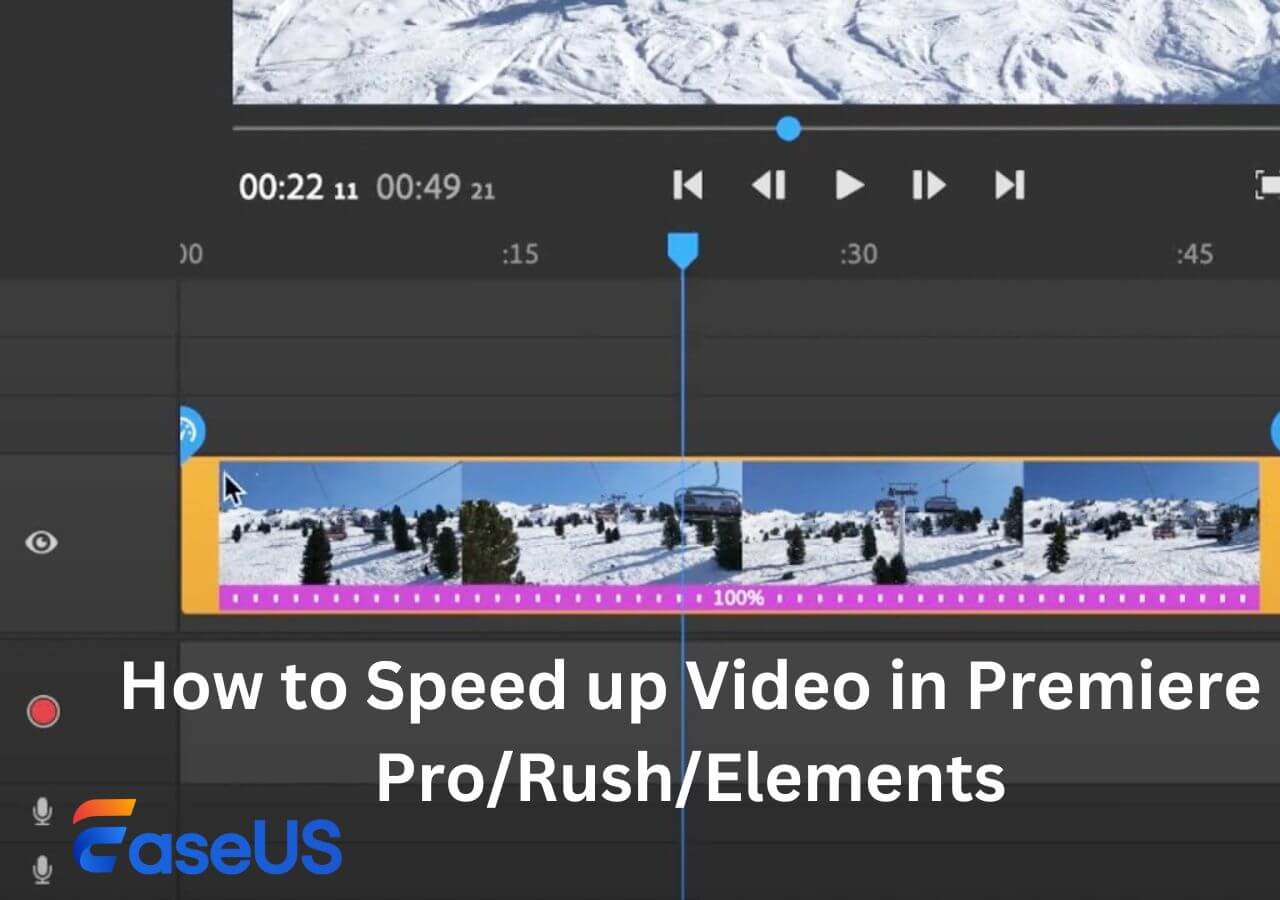-
![]()
Sofia Albert
Sofia has been involved with tech ever since she joined the EaseUS editor team in March 2011 and now she is a senior website editor. She is good at solving various issues, such as video downloading and recording.…Read full bio -
![]()
Melissa Lee
Melissa Lee is a sophisticated editor for EaseUS in tech blog writing. She is proficient in writing articles related to screen recording, voice changing, and PDF file editing. She also wrote blogs about data recovery, disk partitioning, data backup, etc.…Read full bio -
Jean has been working as a professional website editor for quite a long time. Her articles focus on topics of computer backup, data security tips, data recovery, and disk partitioning. Also, she writes many guides and tutorials on PC hardware & software troubleshooting. She keeps two lovely parrots and likes making vlogs of pets. With experience in video recording and video editing, she starts writing blogs on multimedia topics now.…Read full bio
-
![]()
Gorilla
Gorilla joined EaseUS in 2022. As a smartphone lover, she stays on top of Android unlocking skills and iOS troubleshooting tips. In addition, she also devotes herself to data recovery and transfer issues.…Read full bio -
![]()
Rel
Rel has always maintained a strong curiosity about the computer field and is committed to the research of the most efficient and practical computer problem solutions.…Read full bio -
![]()
Dawn Tang
Dawn Tang is a seasoned professional with a year-long record of crafting informative Backup & Recovery articles. Currently, she's channeling her expertise into the world of video editing software, embodying adaptability and a passion for mastering new digital domains.…Read full bio -
![]()
Sasha
Sasha is a girl who enjoys researching various electronic products and is dedicated to helping readers solve a wide range of technology-related issues. On EaseUS, she excels at providing readers with concise solutions in audio and video editing.…Read full bio
Content
Fix CapCut Auto Captions Not Working
How to Add Captions to a Video on CapCut
Get Subtitles to a Video Easily on EaseUS VideoKit
Wrapping up
Put Subtitles in CapCut FAQs
4099 Views |
4 min read
CapCut is a versatile and cross-platform video editing software available on web, PC, Mac, iPhone, and Android devices that enables users to create and enhance videos with various features, including adding subtitles, transitions, effects, and more.
If you're looking to elevate your video content on CapCut, adding subtitles to MP4 is a powerful technique that can make your videos more engaging and accessible. Whether you're a social media aficionado, a content creator, or just someone who wants to communicate more effectively through videos, the process of adding subtitles to your downloaded video on CapCut is both straightforward and impactful.
In this guide, we'll take you through the simple steps to seamlessly integrate subtitles into your videos, allowing you to connect with a broader audience and clearly convey your message.
Fix CapCut Auto Captions Not Working
Auto captions in CapCut can be a game-changer for making your videos more accessible and user-friendly while saving time and trouble.
When problems like Hulu subtitles now working arise, don't worry – there are steps you can take to address the CapCut auto-captions not working.
Check Audio Quality: Poor audio quality can lead to inaccurate captions. Ensure that your video's audio is clear and without excessive background noise.
- Tip
- Enhance audio quality with EaseUS VideoKit, the best video editor with customizable audio and video editing software.
-
- Update the App: Outdated versions of CapCut might have bugs that affect auto-captions. Update the app to the latest App Store or Play Store version.
- Use Clear Pronunciation: Speak clearly and avoid mumbling or overly fast speech. This will help the auto-captions algorithm accurately transcribe your content. Or remove distortion from audio to improve quality.
- Review Language Settings: Ensure you've selected the correct language for your video. Auto captions rely on accurate language detection.
- Edit Captions: After generating auto-captions, review and edit them for accuracy. CapCut usually allows manual adjustments to the captions.
- Break Down Complex Speech: If the auto-captions struggle with long or complex sentences, consider breaking them down into shorter phrases.
- Reanalyze and Retry: If captions are still inaccurate, try reanalyzing the video or retrying the auto caption feature.
- Contact Support: If none of the above steps work, contact CapCut's customer support for further assistance.
Subtitles vs. Closed Captions | 2023 Complete Differences
If you are interested in knowing what's the difference between subtitles vs. closed captions, here's a detailed article.
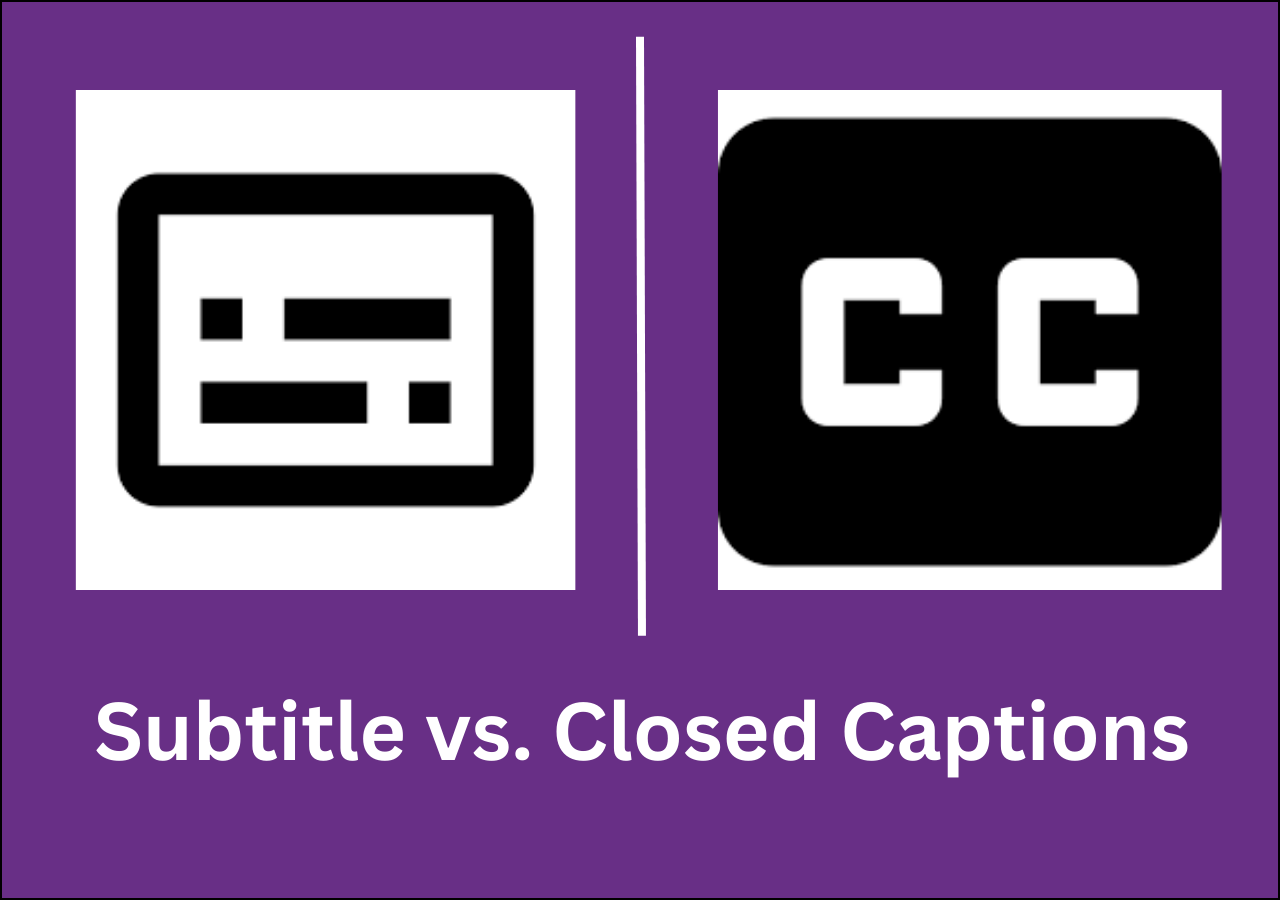
How to Add Captions to a Video on CapCut
How to add captions to YouTube videos on CapCut is pretty straightforward, but steps vary from platform to platform.
1. On Web📻
CapCut has a web version to add auto/manual captions to videos, and apply various stickers and effects, or change background music to enhance videos. To do so, follow the steps:
Step 1. Visit the CapCut website and sign in. Press "Click to upload" to add your video clip.
Step 2. Move to the "Captions" tab, and choose between "Auto captions" or "Manual captions."
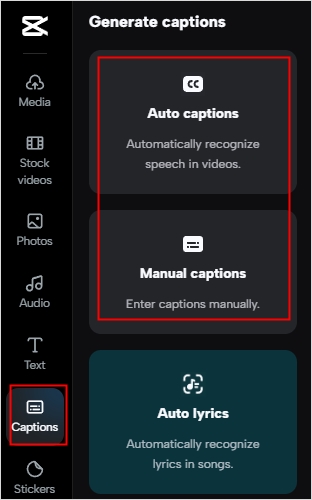
Step 3. Select the language in the video and hit "Generate" for CC, or add captions manually.
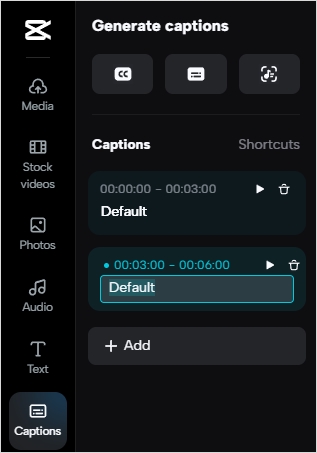
Step 4. Click the captions and adjust the subtitles using the sidebar gadgets.
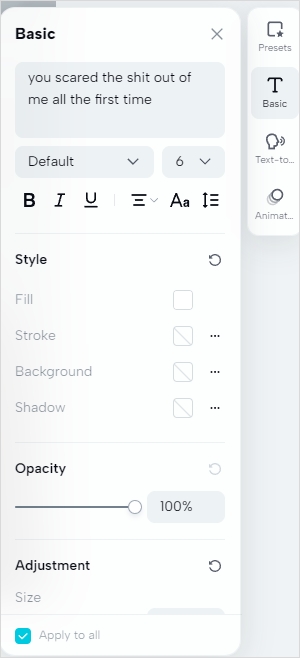
Step 5. Click "Export" atop the panel.
If it helps, forward the blog to those in need!
2. On Windows/Mac💻
CapCut desktop editor has the AI algorithm for the script to video, auto reframe, and auto cations. Do the steps to add closed captioning to a video:
Step 1. Open CapCut on your system and start a new project.
Step 2. Click "Import" to add your video and drag it to the timeline.
Step 3. Under the "Text" tab, choose "Add text" for the manual operation.

Step 4. Or go to the "Auto captions" panel, select the language from the drop-down, and hit "Create."
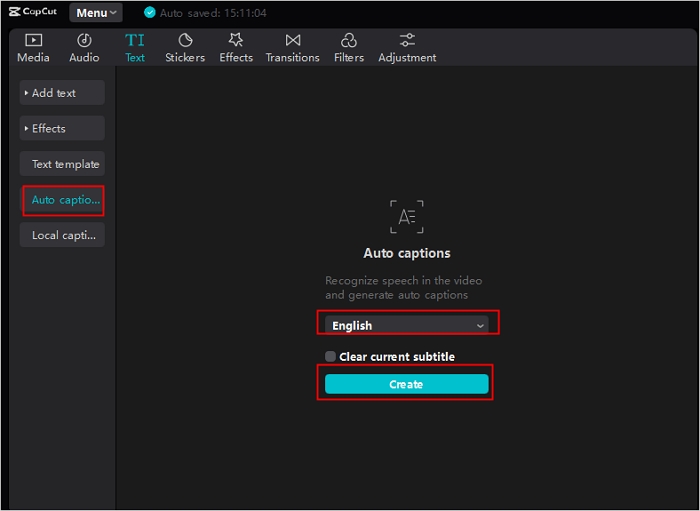
Step 5. Customize the subtitles and export the video.

3. On iPhone/Android📱
CapCut is also obtainable on iOS or Android devices; you can add captions to a video on iPhone. Here's a step-by-step guide to adding captions to a video:
Step 1. Start CapCut on your mobile and click "New project" to create one.
Step 2. Load the video clip from the local library.
Step 3. Locate the "Text" option at the bottom and choose "Add text" or "Auto Captions."
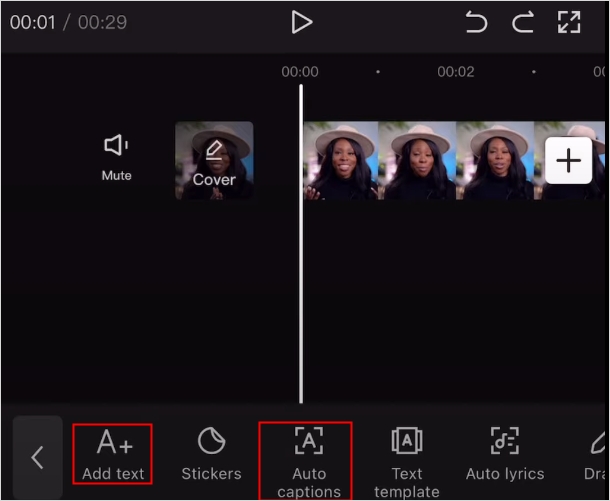
Step 4. If you choose auto-captions. Choose "Original sound," "Voiceover," or "Both" for the sound source.

Step 5. Select the target language and click "Start."
Step 6. Manually adjust the caption text and stylize the subtitles.
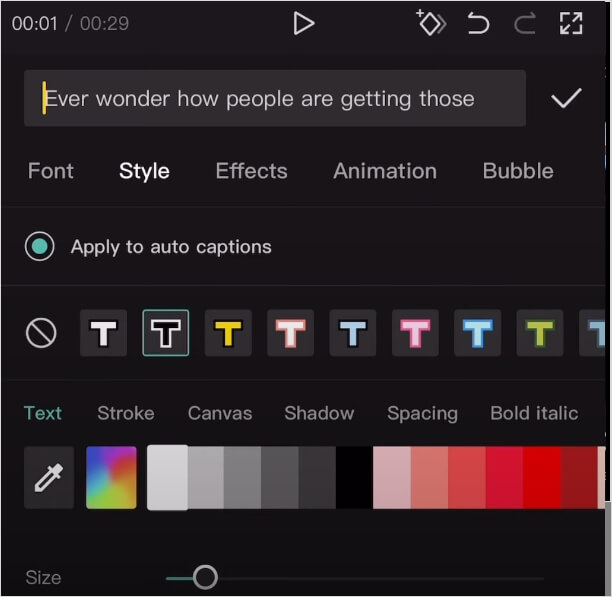
See the following video for a quick peek📽️:
Get Subtitles to a Video Easily on EaseUS VideoKit
EaseUS VideoKit is an offline video editor for Windows and macOS, which enables AI-based auto caption generation in videos in seconds and manual editing afterward. Then, stylize your subtitles' font, size, color, and other effects in a breeze.
This versatile tool also allows you to enhance audio in video, separate vocals and accompaniment for karaoke, remove background noise from video, and open SRT file to edit. Besides that, it features:
- Video converter, compressor, and merger for 1000+ video formats.
- AI-powered subtitle generator, vocal and noise remover.
- Audio extractor, converter, and audio-to-video conversion.
Learn the simple process of subtitle generation in EaseUS VideoKit:
Step 1. Open EaseUS VideoKit and find the "Subtitle Generator" panel.

Step 2. Click "Choose File" or drag the YouTube video file to the interface.
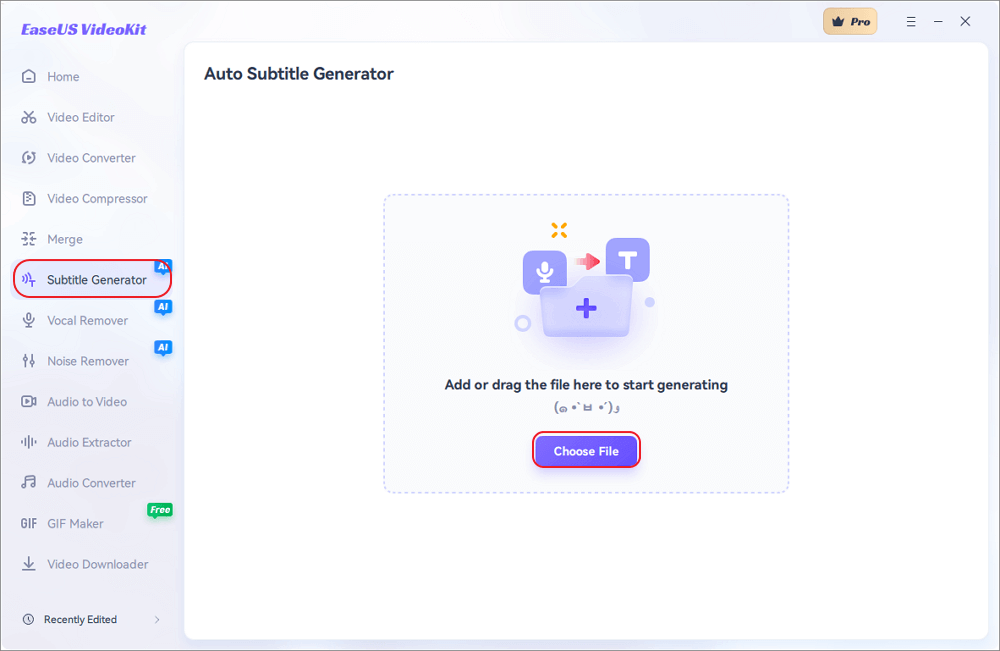
Step 3. Wait for the AI analyzing.
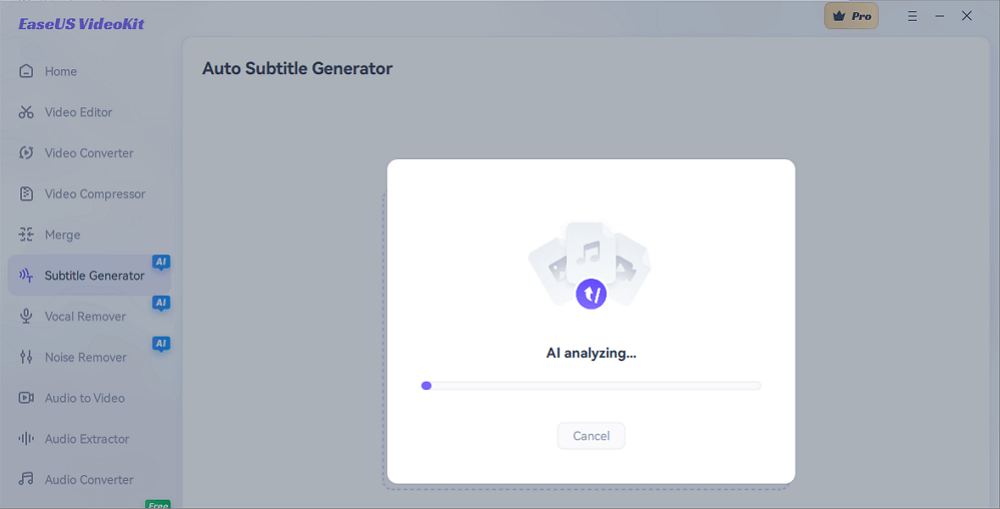
Step 4. Click the "Text" button to change the text, or customize font, background, and position under "Style" menu.
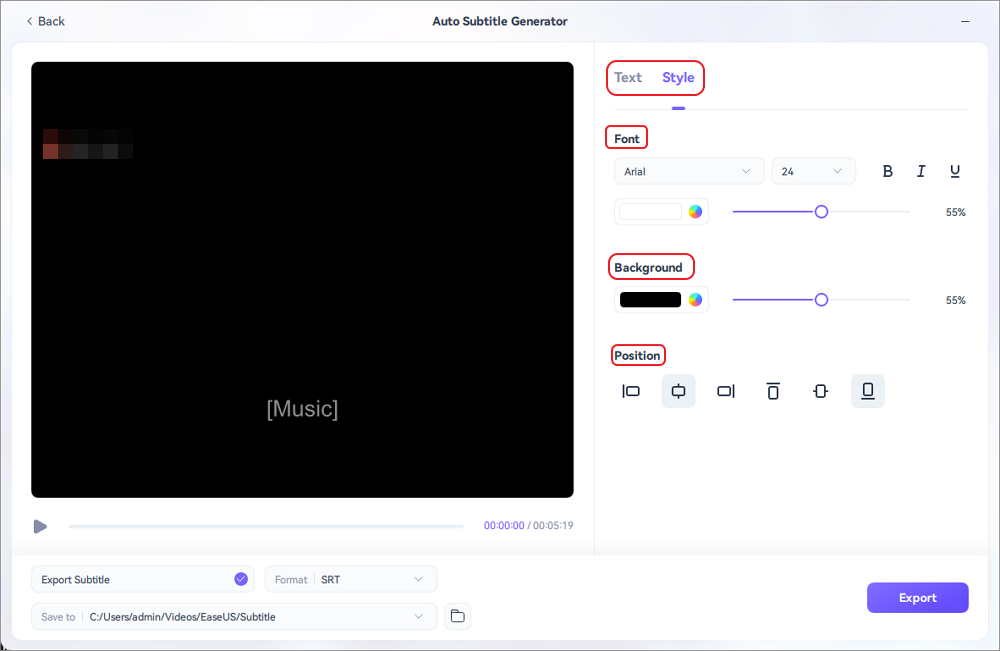
Step 5. Click "Export Subtitle" to select exported subtitle format, "Save to" to change location, and press "Export" to export the video with subtitles.
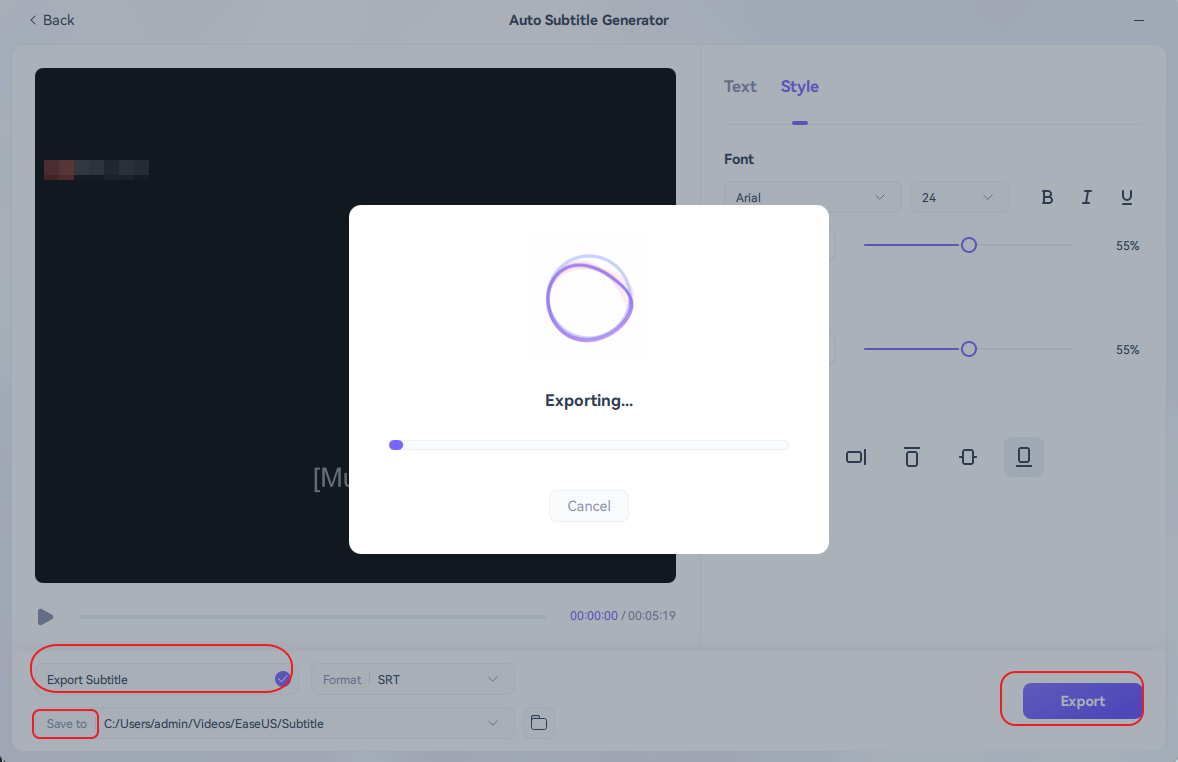
Wrapping up
In summary, CapCut is your go-to solution for seamlessly adding subtitles to your videos, whether you're on a computer or a mobile device. With its user-friendly interface and powerful features, you can create captivating content that engages your audience.
For an alternative, consider EaseUS Video Editor, part of the EaseUS VideoKit suite. This versatile tool provides a comprehensive platform for adding subtitles, transitions, and effects to your videos on both PC and Mac.
Whether you opt for CapCut or EaseUS Video Editor, the ability to create compelling videos with subtitles has never been easier. Elevate your content, connect with your audience, and make your videos accessible to all.
Put Subtitles in CapCut FAQs
1. How do I add subtitles to an existing video?
Adding subtitles to an existing video involves a few steps, and the specific process might vary depending on the software you're using. Here's a general guide on how to add subtitles to a video:
- Select a video editing tool like Adobe Premiere Pro, EaseUS ViedoKit, or an online editor.
- Open your video in the chosen software.
- Add your prepared subtitle file (e.g., .srt, .vtt).
- Adjust subtitle timing, positioning, and appearance.
- Play the video to check subtitle accuracy and presentation.
- Save the video with embedded subtitles and share as needed.
2. How to do one-word captions on CapCut?
To do a one-word caption on CapCut:
- Import your media on CapCut.
- Go to "Text" > "Auto captions," then select the language and hit "Create."
- Stylize your subtitles and play the video to check.
3. How do I add subtitles to a video on my iPhone?
Adding subtitles to a video on an iPhone typically involves using a video editing app that supports subtitle import. Here's how you can do it using an app like iMovie:
- Launch the app on your iPhone and start a new project.
- Add your video from the camera roll.
- Tap the "+" button above the timeline.
- Choose "Titles" and a simple style.
- Enter subtitle text and adjust the font.
- Drag subtitles along the timeline to sync with the speech.
- Play the video to check subtitles and tap "Done."

